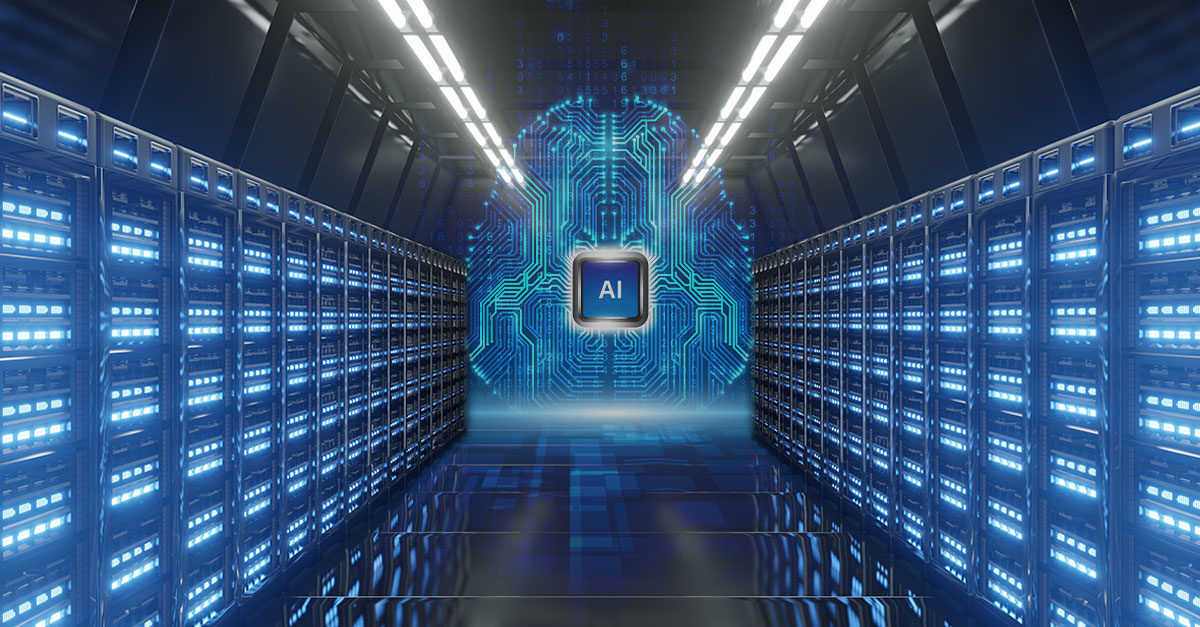How has AI changed data centers?
Annie Paquette
December 10, 2019
- Categories:
- Industry Trends and Solutions
- Tags:
- intelligent PDU

It is an interesting question, but in all of the conversation these days about 5G and AI, there is little time given to the impact of these two advancements on the rear guard of technology. We’re talking about the ‘back of the room’ operations that take place inside data centers around the world. In his new white paper, “Powering the Next Revolution: Artificial Intelligence,” Server Technology’s own Marc Cram takes on this topic on his way to rounding out Legrand’s perspective on the AI revolution.
Mr. Cram introduces artificial intelligence as the tool connecting the dots between the forces at work in today’s digital revolution. “The complexity of the systems used to bring IoT, 5G and edge computing together will be beyond the comprehension for the average person,” Cram begins. “Machine-based AI will be applied at many levels and across many systems to provide insight, to optimize performance, and to improve efficiency…” of these systems. In other words, AI will eventually be leveraged to help make sense of the enormous amount of data that IoT and 5G are helping edge computing support.
AI will also drive the way in which computing takes place. Even today, AI has already had an impact on how chip and device manufacturers are thinking about processing. Already, AI is attached to “…the sales floor at the retail store, to the imaging systems in the hospital, to the machinery in the factory, to…the infrastructure supporting the typical data center.” AI will be found in virtually every device around us. Whereas now devices such as iPhones and Amazon Echos have processors that are sorting and collecting data, in the near future they will be fitted with processors that have the capacity to natively perform the machine learning functions handled by supercomputers.
We’re referring to supercomputers that currently reside in data centers. For the near term, providers are relying on “…conventional CPU-based servers in Amazon, Google, Microsoft, or Apple data centers around the globe.” As IoT devices and 5G networks gear up, the fundamental law of physics which states that for every action there is an equal and opposite reaction, the reality for data centers is clear. All of these CPU-based servers need power, and more servers will be needed to meet the processing requirements of the predicted proliferation of data.
Mohr may have been quiet recently, but we think he is just resting up.
At Server Technology, our industry-leading products such as our Smart, Switched and Metered PDUs are providing real solutions. They power and connect the systems running AI applications that then enable Smart Cities, 5G networks, IoT, and edge computing. Our products are well-suited to individual enclosure and IT equipment racks. Our power strategy experts have been trusted to provide network PDU solutions for demanding data centers worldwide for companies large and small. Because power is all we do, and everything needs power, you find us in the best cloud and colocation providers, forward thinking labs and telecommunications operations.
Learn more about Servertech, data centers, and AI by downloading “Powering the Next Revolution: Artificial Intelligence.” You can also visit Server Technology today to learn how we can help you manage and distribute power for your application.
Thanks for your submission. One of our Power Strategy Experts will get back to you shortly.